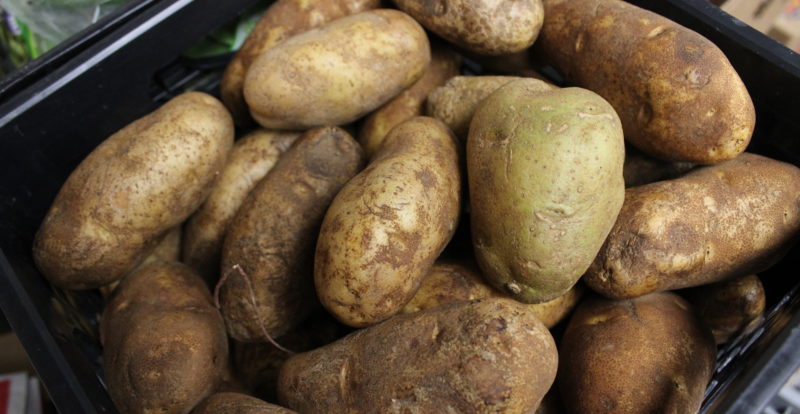If you’ve been following along with our Food Justice series, you may be excited to hear that we’ve reached the third aspect of food justice – Justice for farm workers. “Farmworkers are an essential part of our food system, yet one that remains unseen. They work long, hard days, handling dangerous equipment and chemicals all for low wages” (Fair World Project). Since farmworkers play a crucial role in our food system, their well-being is an important element of food justice advocacy.
In 2020, the Wilson Center estimated that there are 2.5 million individuals employed by US farms during a typical year. Most agricultural work is done in California, Washington, Florida, and Texas. The 2014 NAWS study identified that 73% of agricultural workers were foreign born and 72% were male.
Big agriculture in the United States has a long history of racist practices starting from its foundation. From the 1650s to the 1800s, colonists used slaves to do agricultural work (NC Field). By 1776, African slaves comprised 20% of the colonial population (Smithsonian Magazine). Following emancipation, the government created Black Codes which limited the freedoms of formerly enslaved people. These codes produced a system in which sharecropping was common. 1/3 of sharecroppers were formerly enslaved people. Sharecropping allowed a tenant, often a recently emancipated person or family, to rent land in exchange for a share of the crop. However, due to strict regulations on selling crops for Black farmers and mistreatment by leasers, sharecroppers often struggled with poverty and became trapped in the system. Sharecropping ended in the 1930s (PBS).
Starting in 1848, the United States began relying on immigrant and migrant workers for agricultural work. By the end of the Mexican-American war (1848) migrant workers from Mexico first arrived in the United States for temporary jobs. From the 1860s to 1930s, the United States began recruiting Chinese, Japanese, and Filipino agricultural workers. 7 out of every 8 farmworkers in 1886 were Chinese (NC Field). However, the Chinese Exclusion Act of 1882 halted the migration of Chinese laborers.
Starting in the 1900s, there were various ebbs and flows of demand for Mexican labor. During World War I, the United States introduced its first guest worker program, the Bracero program, which allowed 70,000 Mexican workers into the US from 1917-1921. In the early 1930, Filipino workers, who were beginning to unionize, were slowly replaced by Mexican agricultural laborers. When World War II began, the US experienced labor shortages that led the country to restart the Bracero Program from 1942-1964 (Wilson Center). The program ended in 1964 due to the abuses Bracero workers were subjected to.
Today, the United States operates the H-2A program for guest workers. The program provides 8% of the agricultural workforce. The program ties workers to a specific employer, and many of the employers make it near impossible to change jobs and severely underpay them. Farmworkers through the H-2A program are often under threat of wage theft and coercion. They face injustice even before coming to the United States when abroad recruiters force them to pay illegal recruitment fees. In November 2021, Operation Blooming Onion revealed a human trafficking ring in Georgia targeting Mexican migrant workers. The Fair Labor Standards Act began protecting farmworkers in 1966. The FLSA now requires the minimum wage and record-keeping in agricultural work. However, the overtime pay requirements (time and a half once over 40 hours) that the law provides employees in other fields is not applicable to farm workers. Additionally, many farmworkers, if they work on a farm with fewer than seven employees, aren’t protected by the minimum wage provisions of the FLSA (Farmworker Justice).
Farmworkers, whether through the H-2A program or otherwise, are vulnerable to poor working and living conditions. According to the 2019 National Agricultural Workers Survey, 30% of farmworkers live below poverty. The average wage for farmworkers in 2017 was $12.47/h. Their wages vary largely based on region and often don’t cover basic needs such as food and housing. In some regions, up to 82% of farm workers are experiencing food insecurity (Sustainable Food Center). Housing is also a significant problem for farmworkers. In a study supported by the National Library of Medicine, 1 in 5 worker housing camps had signs of rodent infestation.
Extreme working conditions can exacerbate physical and mental health issues. 19.4 of every 100,000 farmworkers died from a work-related injury (National Farm Worker Ministry). Farmworkers die at a 20% greater rate from heat related illness than employees of other fields (National Farm Worker Ministry). Pesticide exposure is another danger farmworkers face. In recent years, pesticide exposure has been linked to a wide array of health issues, reproductive problems, birth defects, Alzheimer’s, diabetes, and cancer. Health issues are often worsened by limited access to health care. Many farmworkers live in isolated areas that makes proper health care inaccessible.
You may be wondering; how can we support farm workers? To help improve farmworker conditions, consumers can choose to purchase food from companies that treat their employees ethically. Farmworker justice is a critical aspect of overall food justice. The food justice movement advocates for equality and sustainability in the food system, making better treatment of farmworkers an essential priority. Also, supporting local farmers can be a great way to showcase your support of ethical treatment for farmworkers. Food for Others works directly with local family farms, including F.J Medina and Sons Farm, Hollins Farm, and JK Community Farm.

